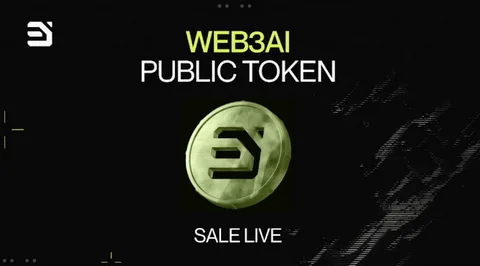The cryptocurrency market is known for its volatility, yet within this chaos, certain projects exhibit remarkable resilience. Stellar (XLM) is one such cryptocurrency that has consistently caught the eye of investors, not just because of its innovative technology, but also due to its ability to withstand market downturns and pivot effectively during challenging times.
As more investors take notice of Stellar’s resilience, it’s becoming increasingly clear that this digital asset could play a pivotal role in the future growth of the crypto market.
In this article, we’ll explore why investors are paying attention to Stellar’s performance and what this means for its future growth.
We’ll examine Stellar’s core technology, its partnerships, and how it maintains its relevance amid growing competition. Most importantly, we will delve into why its resilience is one of the most compelling factors driving investor interest.

What is Stellar (XLM), and Why Does Resilience Matter?
Stellar (XLM) is a decentralized, open-source protocol designed to facilitate cross-border payments between any currency pair. Its primary mission is to make financial transactions faster, cheaper, and more efficient, especially for regions where access to banking is limited. Initially developed by Jed McCaleb, one of the co-founders of Ripple, Stellar has a unique approach to addressing global financial inclusivity.
Resilience, in the context of the cryptocurrency market, refers to a project’s ability to not just survive during tough times, but to adapt and thrive. This is where Stellar shines. While many other blockchain projects struggle during bearish market phases or after facing regulatory scrutiny, Stellar has shown a remarkable capacity to maintain investor interest and attract new partnerships. Investors are beginning to recognize that resilience is just as important as innovation when it comes to the long-term viability of a cryptocurrency.
Stellar’s resilience is a key reason investors are taking notice, and it’s the foundation on which its future growth potential stands. But what exactly makes Stellar so resilient?
The Role of Stellar’s Unique Technology in Its Resilience
One of the fundamental factors behind Stellar’s resilience is its unique technological framework. Unlike many other cryptocurrencies, Stellar is focused on improving the financial infrastructure, especially in regions that are traditionally underbanked. Its consensus protocol, the Stellar Consensus Protocol (SCP), is distinct from Bitcoin’s Proof-of-Work (PoW) or Ethereum’s Proof-of-Stake (PoS). SCP allows transactions to be confirmed faster and at lower costs, which is critical for cross-border payments.
In markets where speed and cost efficiency are paramount, Stellar has carved out a niche by focusing on high-speed transactions without the environmental concerns associated with PoW systems. Stellar’s ability to maintain high throughput during network congestion and its energy-efficient design contribute significantly to its resilience. These technological advantages have led to widespread adoption in the financial sector, especially with organizations that need to settle large volumes of cross-border payments in real-time.
Furthermore, Stellar’s native asset, Lumens (XLM), plays an integral role in maintaining liquidity across different currencies. This aspect of Stellar’s design ensures that even in times of market uncertainty, the platform can still function effectively, providing value to users and keeping investors interested.
Stellar’s resilience, driven by its robust technology, is a major reason investors see it as a solid contender for future growth in the cryptocurrency space. However, technology alone isn’t enough to guarantee success. Strategic partnerships and adoption are equally important, and this is another area where Stellar has excelled.
Stellar’s Strategic Partnerships: A Key Driver of Investor Confidence
One of the standout reasons for Stellar’s resilience is its ability to form strategic partnerships with key players in both the cryptocurrency and traditional financial sectors. These partnerships are not just about increasing the platform’s visibility; they are crucial for ensuring long-term adoption and usage, which ultimately drives future growth.
In 2017, Stellar partnered with IBM to create World Wire, a blockchain-based payment system aimed at improving cross-border transactions for financial institutions. This partnership gave Stellar significant credibility and opened doors to new opportunities in the traditional financial system. IBM’s backing, along with other partnerships in the banking and fintech industries, has reinforced the notion that Stellar isn’t just another blockchain project—it’s a serious contender in reshaping the future of global payments.
Other notable partnerships include collaborations with fintech companies like SatoshiPay and even government initiatives aimed at improving remittance services in developing countries. Stellar’s emphasis on real-world use cases that solve tangible problems adds a layer of resilience that many speculative cryptocurrencies lack.
These partnerships have provided Stellar with a steady stream of adoption, particularly in regions where traditional banking infrastructure is either weak or expensive. As these relationships deepen and Stellar’s technology continues to be implemented in real-world scenarios, its resilience and future growth potential are further solidified in the eyes of investors.
Strategic partnerships are a key reason investors are optimistic about Stellar’s future growth. They provide stability, ensure ongoing adoption, and offer real-world value, all of which contribute to Stellar’s long-term success in a volatile market.
Regulatory Compliance: Stellar’s Edge Over Competitors
The cryptocurrency space is notorious for regulatory uncertainty, with projects often facing challenges from governments and financial authorities. One of the reasons Stellar has managed to remain resilient in the face of such challenges is its proactive approach to regulatory compliance.
Stellar has positioned itself as a platform that works with regulators rather than against them. Its partnerships with organizations like the United Nations and compliance with international standards like the Financial Action Task Force (FATF) guidelines have allowed it to operate in various jurisdictions without major legal roadblocks.
This commitment to compliance is particularly important for institutional investors, who are often wary of projects that could face regulatory shutdowns or sanctions. Stellar’s willingness to work within the framework of international regulations has made it a more attractive option for these investors. Furthermore, Stellar’s focus on providing a legally compliant framework for cross-border payments makes it a safer bet for businesses looking to integrate blockchain solutions into their operations.
In contrast, other cryptocurrency projects that focus solely on decentralization without considering regulatory compliance often face significant challenges when attempting to gain institutional adoption. Stellar’s ability to navigate these legal complexities has been a major factor in its resilience and a reason why investors are taking notice.
What the Future Holds for Stellar and Its Investors
Looking to the future, Stellar is well-positioned to capitalize on several key trends that are driving growth in the cryptocurrency and blockchain sectors. The global demand for faster, cheaper cross-border payments is only increasing, and Stellar’s established presence in this market gives it a clear advantage. Additionally, as more financial institutions and businesses adopt blockchain technology, Stellar’s resilience and ability to form strong partnerships will likely lead to further adoption.
Another key area of growth for Stellar is its involvement in decentralized finance (DeFi). While Stellar is primarily known for its cross-border payments, it has also been making strides in the DeFi space. Stellar’s blockchain is compatible with smart contracts, and developers are increasingly using the platform to create decentralized applications (dApps). As the DeFi sector continues to grow, Stellar’s involvement in this space could lead to significant future growth, attracting both retail and institutional investors.
Moreover, Stellar’s focus on sustainability and energy efficiency aligns with growing global concerns about the environmental impact of blockchain technologies. As governments and institutions become more focused on green initiatives, Stellar’s energy-efficient consensus protocol could become a significant selling point for investors looking to support sustainable projects.
Conclusion: Why Stellar’s Resilience Makes It a Strong Contender for Future Growth
Stellar’s resilience, driven by its unique technology, strategic partnerships, and commitment to regulatory compliance, sets it apart from many other projects in the cryptocurrency space. Investors are taking notice of Stellar not just because of its innovative approach to cross-border payments, but also due to its ability to thrive in a volatile market.
As we look to the future, it’s clear that Stellar is well-positioned to capitalize on emerging trends like decentralized finance and sustainability. Its resilience ensures that it will continue to be a major player in the blockchain space, making it a strong contender for future growth.
What do you think about Stellar’s resilience and its potential for future growth? Let us know your thoughts in the comments below!






